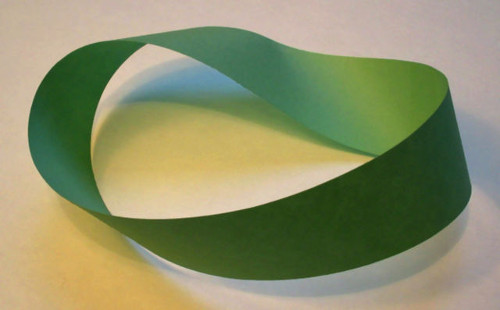
Gabriel Josipovici’s 1974 short story “Mobius the Stripper” is subtitled “A Topological Exercise.” The text is written in two strips, which tell two ostensibly different stories.
The first strip tells the story of Mobius, a man of uncertain origin who feels a metaphysical need to strip, “to take off what society has put on me” and discover his true self. He takes a job at a London club, where he talks as he performs and feels his essential self emerging. In the end, though, he comes to an existential crisis, unable to find any ultimate meaning, and shoots himself in his room to provide “an example to all.”
The second strip describes the troubles of an unnamed writer who shuts the world away, eager to write something new but overcome with writer’s block and intimidated by the writers of the past. His friend Jenny urges him to see a stripper named Mobius. “It’ll change your ideas,” she says. “Give it a break and you’ll all of a sudden see the light.” In the end, desperate to overcome the block, he begins to write a story about Mobius, whom he has never seen. “Perhaps it was only one story, arbitrary, incomplete, but suddenly I knew that it would make its own necessity and in the process give me back my lost self.”
If these tales are written on either side of a strip of paper, and one end of the strip is given a half-turn and then attached to the other, they create one unending story in which Mobius’ example frees the writer, who in his story gives new fictional depth to Mobius’ struggle, which lends it greater meaning and inspiration, and so on. Mobius is described differently in the two stories, suggesting that the Mobius of the first story is largely an invention of the writer in the second story. So where does the inspiration come from?
